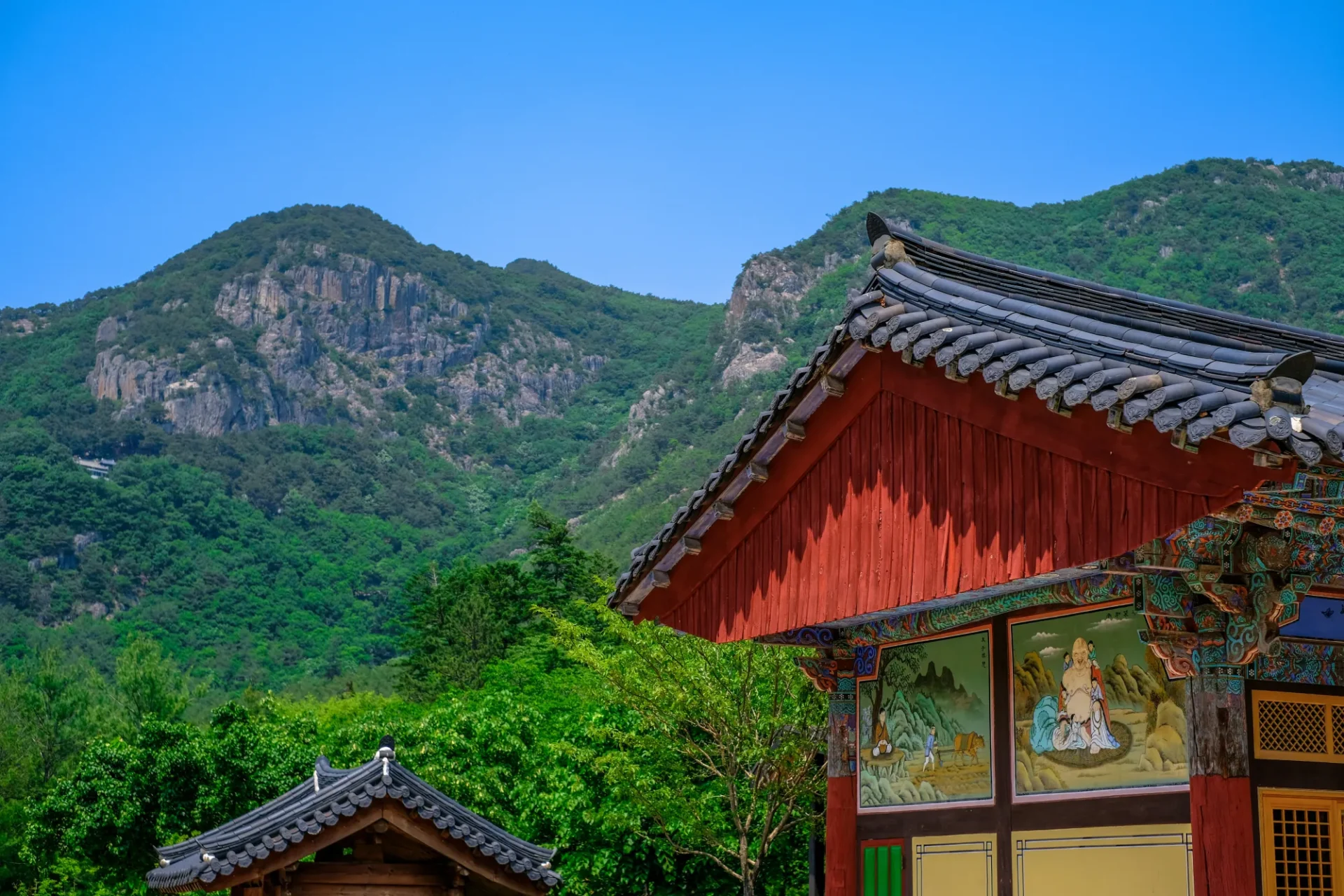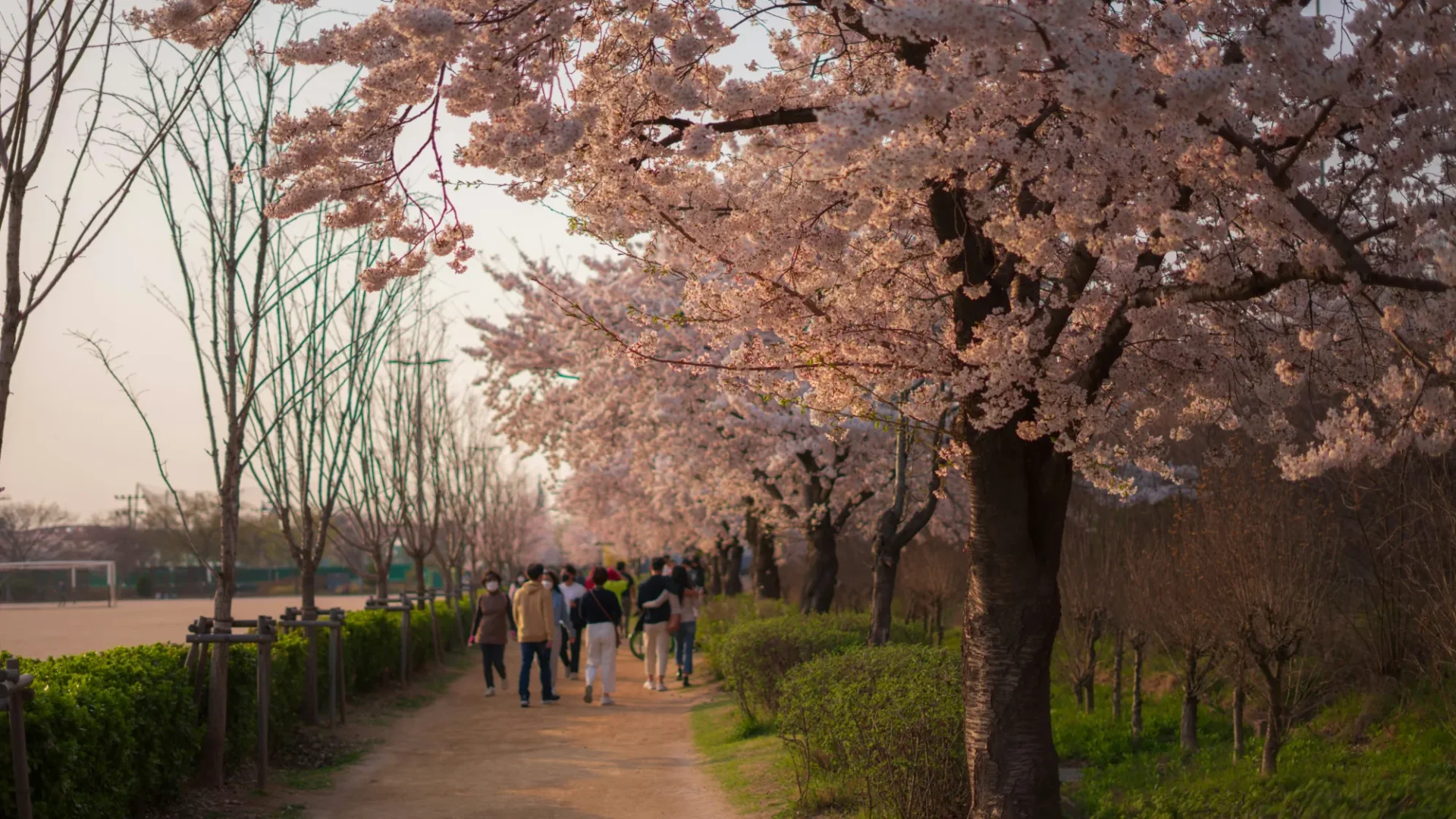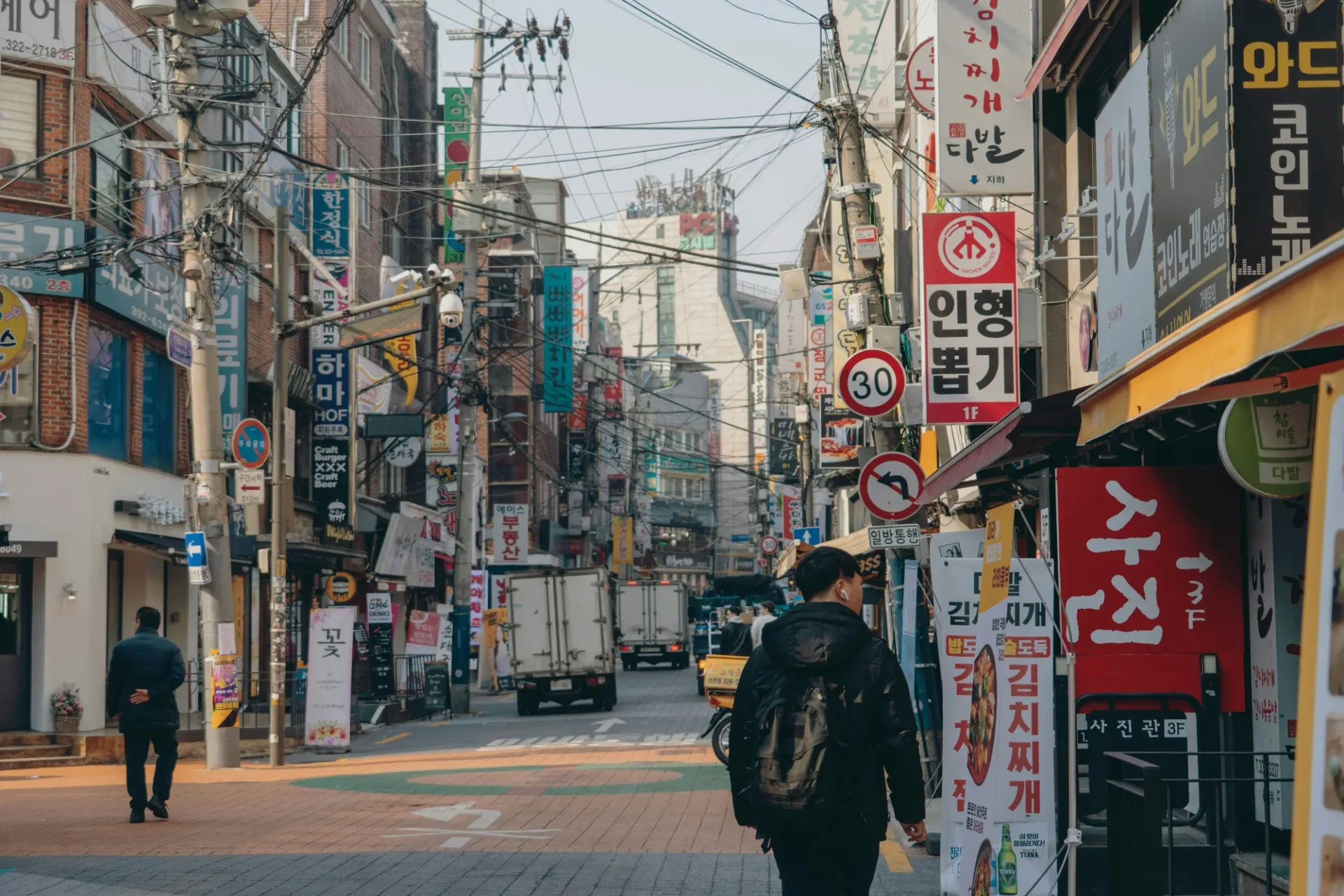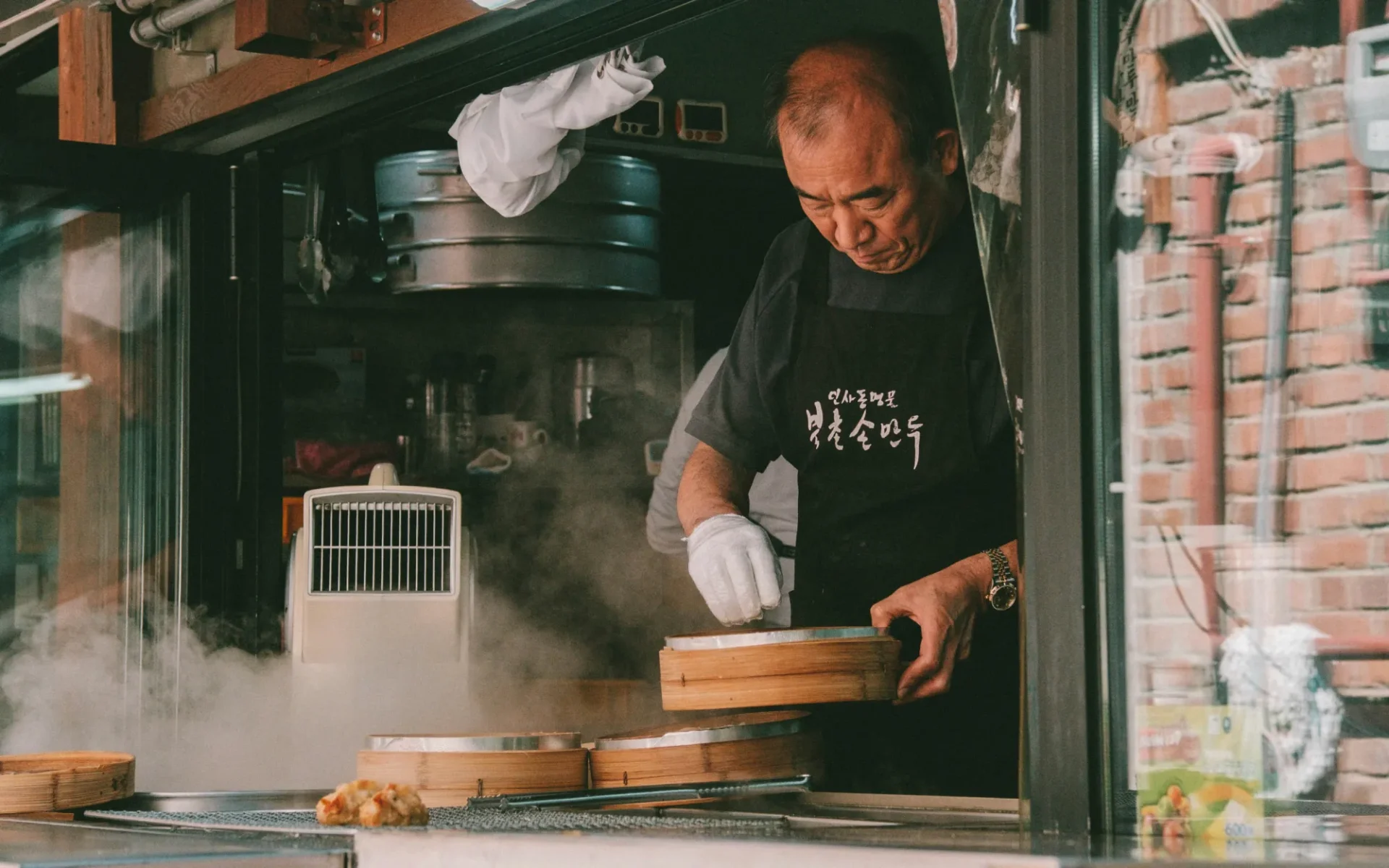South Korea presents an enticing mix of modern urban life and picturesque rural landscapes, making it a vibrant location for digital nomads. This guide provides you with the key information you need to thrive while working remotely in South Korea, covering everything from efficient transportation options to immersing yourself in the local culture.
Digital nomads in South Korea, let’s get started.
Key Takeaways
- South Korea’s efficient public transportation system includes metros, buses, and high-speed trains, making travel convenient for digital nomads.
- Rural areas provide a contrast to urban life with scenic landscapes and unique self-drive adventures, accessible through intercity buses and rental cars.
- Staying connected is easy with widespread Wi-Fi hotspots, coworking spaces, and advanced tech resources like Kakao Map for navigation.
- Timing your visit to coincide with South Korea’s vibrant seasonal festivals and activities can enhance your cultural experience.
- Embracing local customs, cuisine, and language can lead to a more immersive and fulfilling stay as digital nomads in South Korea.
Navigating Seoul

Mastering the Metro
Seoul’s metro system is your key to the city. With 23 lines crisscrossing the capital, you can reach almost any destination with ease. Signage and announcements in multiple languages make navigation a breeze.
Here’s how to make the most of it:
- Look for platform safety doors with maps to plan your journey.
- Colored arrows on these maps show transfer points to other lines.
- Note the two-digit number by the arrow for the quickest transfer. For instance, ‘7-2’ means board car seven, door two.
The Subway Korea app is a traveler’s best friend for route planning across all five of Korea’s metro systems.
Buying a ticket is simple. Machines offer instructions in English and accept both cash and cards. If you’re staying longer, consider a rechargeable T-money card. It’s accepted on buses and taxis too, saving you the hassle of buying individual tickets. Remember, the metro is busiest during rush hours. Travel off-peak when you can to enjoy a more relaxed ride.
Bus Basics: From Express to Local Lines
Seoul’s bus system is your ticket to every nook and cranny of the city. Express buses zip through dedicated lanes, making them a swift option during rush hours. Local buses, on the other hand, meander through neighborhoods, offering a closer look at daily life in Seoul.
For a smooth ride, familiarize yourself with bus numbers and routes before you board. This can save you time and spare you the confusion of navigating on the fly.
Here’s a quick guide to understanding bus categories:
- Blue buses connect districts within the city.
- Green buses circulate within a district, linking neighborhoods to subway stations.
- Yellow buses run shorter, circular routes in central areas.
- Red buses are express buses that travel to and from Seoul’s outskirts.
Remember, traffic can be unpredictable. Allow extra time for your journey, especially during peak hours. And don’t forget, apps like KakaoBus offer real-time updates and route information, making them invaluable travel companions.
Seoul’s Other Modes of Transport
Seoul offers more than just subways and buses. Bike-sharing systems are gaining traction, offering a fresh perspective on the cityscape. Rent a bike and weave through the local neighborhoods, or take a leisurely ride along the Han River for a unique Seoul experience.
For those who prefer a more scenic route, the V-Train is a hidden gem. With large windows framing the picturesque Korean countryside, it’s a journey as memorable as the destination.
Ride-sharing in Seoul is another option. Apps like Kakao T connect you to local taxis, offering insights into the city from drivers who know it best.
Here’s a quick guide to get you started:
- Download Kakao T or a similar app.
- Choose your ride type: regular taxi or a partnered Uber taxi.
- Enjoy the conversation and local tips from your driver.
Remember, while ride-sharing may feel familiar, it’s the nuances that make it uniquely Korean.
Discovering Rural South Korea

Understanding Intercity Buses
Intercity buses in South Korea bridge the gap between bustling cities and serene countryside – they’re your ticket to the less-traveled roads.
Booking a bus is a breeze, even if you’re not fluent in Korean. While local websites may give you a headache, international platforms like Klook offer a smoother experience. Just search, compare, and book your way to a seamless journey.
Remember, buses run frequently, and snagging a ticket on the spot is often as easy as pie. No fuss, no muss.
Here’s a quick guide to get you started:
- Check schedules and routes on user-friendly platforms.
- Look for tickets with flexible cancellation policies.
- Arrive early to find your bus and secure the best seat.
While you’re on the road, keep an eye out for low-floor buses. They make hopping on and off easy, especially if you’re carrying luggage or traveling with a stroller. And in the city, bilingual announcements keep you in the loop, stop by stop.
Trains: Scenic Routes and Rail Passes
South Korea’s rail system is a window to its soul, offering views that range from urban sprawls to serene countryside. KORAIL operates the main lines, ensuring a smooth journey from city to city. The KTX, Korea’s bullet train, slashes travel time, making a trip from Seoul to Busan a breeze in just over two hours. For those who prefer a slower pace, Saemaeul and Mugunghwa trains offer comfortable rides with stops at quaint, lesser-known stations.
For the savvy traveler, a KORAIL Pass is a golden ticket. It grants unlimited access to trains over several days, making it a cost-effective choice for extensive exploration.
Here’s a quick guide to the types of trains:
- KTX: The speedster of the tracks, reaching 330 km/h.
- Saemaeul: A more leisurely option, still swift and comfortable.
- Mugunghwa: The slowest, but a ticket to hidden gems along the route.
Remember, tickets are available at stations or online. Choose your adventure, grab a pass, and let the train whisk you away to the heart of Korea.
Renting a Ride: Tips for Self-Drive Adventures
Renting a car in South Korea opens doors to the country’s scenic backroads and hidden gems. Prepare to be charmed by the freedom of the open road, but remember, navigation can be tricky. Ditch Google Maps and opt for Kakao Map for a smooth journey.
Here’s a quick guide to get you started:
- License Check: Ensure your international driving permit is valid in South Korea.
- Rental Reservation: Book your vehicle in advance, especially during peak travel seasons.
- Insurance Insight: Opt for comprehensive insurance for peace of mind.
Driving in South Korea is an experience in itself. With well-maintained roads and English signposts, the journey is as pleasant as the destination.
Fuel up on local knowledge before you go. Ask rental agencies about tolls, parking, and local driving etiquette. Remember, patience is a virtue, especially in city traffic.
Digital Nomad’s Toolbox

Wi-Fi: Finding Hotspots and Data Plans
Digital Nomads in South Korea, rejoice! Staying online here is a breeze, thanks to a plethora of Wi-Fi hotspots and data plans. Seoul boasts one of the world’s fastest internet speeds, ensuring you’re only a click away from your next virtual meeting or streaming session.
Here’s a quick guide to staying connected:
- Look for public Wi-Fi in subways, cafes, and parks.
- Consider a portable Wi-Fi device like Skyroam Solis or GlocalMe for on-the-go internet.
- Local SIM cards offer generous data packages; compare options from KT, SKT, and LG U+.
- Monthly subscriptions can be more cost-effective for longer stays.
Remember, while free Wi-Fi is convenient, security is paramount. Always use a VPN when connecting to public networks to protect your data.
For those who prefer a no-fuss approach, mobile hotspots are a godsend. They’re compact, easy to use, and offer the freedom to work from anywhere.
Coworking Spaces: Mixing Productivity with Pleasure

Coworking spaces in South Korea blend modern amenities with unique cultural experiences. Seoul’s coworking scene thrives on creativity and collaboration. You’ll find a range of options, from quiet nooks for solo work to vibrant hubs where ideas and coffee flow freely.
- Fast Wi-Fi: Available in any space, keeping you connected at all times.
- Community Events: Workshops, networking sessions, and social gatherings.
- Flexible Plans: From hourly passes to monthly memberships, choose what suits you.
- Diverse Locations: Choose from bustling city centers or serene spots near nature.
Embrace the flexibility of coworking spaces to balance your work and exploration. With facilities open 24/7, you can work on your terms, whether you’re an early bird or a night owl.
Coworking spaces are more than just a desk and internet. They’re a gateway to local culture and a chance to meet fellow digital nomads in South Korea. Dive into the local scene, taste the street food nearby, or join a language exchange. Your workday has the potential to become a cultural adventure.
Apps and Maps
In South Korea, tech is king, and navigating the streets is a breeze with the right apps. Subway Korea guides you through the metro maze with ease, offering English signage and real-time updates. For road warriors, Kakao Map outshines Google Maps, ensuring you never miss a turn, even off the beaten path.
- Subway Korea: Your metro companion
- Kakao Map: Driving directions in English
Embrace the digital side of travel. With these apps, you’ll explore like a local, finding hidden gems and smooth travels.
Timing Your South Korean Travels
Spring: Cherry Blossoms and Festivals

Spring in South Korea is a symphony of colors, with cherry blossoms painting the towns pink. Timing is everything; the blossoms wait for no one. Plan to visit between late March and early April to catch this fleeting beauty.
Embrace the local festivities during this period. Streets come alive with parades, music, and dance, offering a feast for the senses.
Here’s a quick guide to help you make the most of the season:
- Check the cherry blossom forecast to pinpoint the best viewing spots.
- Join a festival tour to experience the culture and meet new friends.
- Sample seasonal delights at street food stalls, where flavors burst with freshness.
Remember, spring is not just about cherry blossoms. It’s a time of renewal and celebration. Dive into the vibrant atmosphere and let the energy of the season invigorate your nomadic spirit.
Summer: Beaches and Night Markets
South Korea’s summer is a vibrant blend of sun, sand, and spirited festivities. Beaches come alive with sunbathers and swimmers, while night markets buzz with energy, offering everything from spicy street food to handmade crafts.
Here’s how to make the most of it:
- Haeundae Beach in Busan is a must-visit for its lively atmosphere and cultural events.
- Gwangalli Beach offers stunning night views of the Gwangan Bridge, perfect for a romantic stroll.
- Dive into the heart of Seoul’s summer at the Bamdokkaebi Night Market, where food trucks and live music create a festive mood.
Embrace the local scene by trying out a cooking class or joining a beach volleyball game. It’s the perfect way to meet locals and fellow travelers.
Autumn: Hiking and Harvest Festivals
As the leaves turn a fiery palette, South Korea transforms into a hiker’s paradise. Trails come alive with vibrant colors, offering breathtaking views. From the crisp air of Seoraksan National Park to the golden hues of Naejangsan, each trail promises a unique experience.
Here’s a quick guide to make the most of your autumn adventure:
- Pack layers for changing temperatures.
- Check local guides for the best foliage spots.
- Join harvest festivals to taste the season’s bounty.
Autumn also brings a rich harvest, and with it, festivals that celebrate the abundance of nature. Villages and towns across the country host events where you can sample local delicacies, watch traditional performances, and even participate in harvesting activities.
Embrace the season’s spirit by immersing yourself in the local culture and nature’s splendor.
Winter: Skiing and Snow Festivals
As the temperatures drop, South Korea transforms into a winter sports paradise. Gangwon province, a beacon of snowy slopes, offers more than just skiing; it’s a wellness destination year-round. Here, the legacy of the Pyeong Chang 2018 Winter Olympics lives on, with resorts like Yongpyong and Phoenix Park promising adrenaline and relaxation in equal measure.
- Yongpyong Ski Resort: A playground for all ages.
- Vivaldi Park Ski Resort: A favorite among the youth.
- Phoenix Park Ski Resort: A slice of heaven for snow enthusiasts.
Embrace the cold and join the locals in celebrating the season at vibrant snow festivals. From ice fishing to snow sculptures, these events are a testament to Korea’s love affair with winter.
Cultural Immersion: Living Like a Local

Language Hacks: Communicating with Confidence
Speaking Korean can open doors to new friendships and enrich your cultural experience. Start with the basics: greetings, thank you, and the ever-important bathroom inquiry. Practice makes perfect, so don’t shy away from striking up conversations at local markets or cafes.
- Hello: Annyeonghaseyo (안녕하세요)
- Thank you: Kamsahamnida (감사합니다)
- Excuse me / Sorry: Sillyehamnida (실례합니다)
- Yes: Ne (네)
- No: Aniyo (아니요)
Embrace mistakes as part of the learning process. Locals often appreciate the effort, even if your pronunciation isn’t spot on.
Carry a pocket-sized phrasebook or download a language app for quick reference. Remember, body language and a warm smile go a long way when words fail. Dive into language exchange meetups to practice your skills and meet new people. The more you immerse yourself, the quicker you’ll pick up the nuances of Korean conversation.
Culinary Delights: Street Food and Traditional Eats

As you wander, you’ll find street food stalls drawing you in with their vivid hues and captivating scents, each promising a taste of the country’s vibrant food culture. Sample the iconic Kimchi, a staple at every meal, or dive into a steaming bowl of Bibimbap, a mix of rice, vegetables, and meat topped with a fried egg. Don’t miss out on tteokbokki, chewy rice cakes smothered in a spicy-sweet sauce.
For meat lovers, Bulgogi‘s marinated beef flavors are a revelation, while jjigae, a hearty Korean stew, offers comfort in a bowl. Noodle enthusiasts will relish Jajangmyeon, a dish of noodles coated in a savory black bean sauce. Wrap up your meal with Samgyeopsal, grilled pork belly that sizzles to perfection, or the ever-popular Korean fried chicken, a crispy delight.
Embrace the bustling food markets and hidden alleyways where culinary gems await discovery.
Remember, each dish tells a story of tradition and innovation. Here’s a quick list to guide your taste buds:
- Kimchi: Fermented vegetables, a healthful sidekick
- Bibimbap: A colorful, customizable rice bowl
- Tteokbokki: Spicy, sweet, and chewy rice cakes
- Bulgogi: Tender, marinated beef slices
- Jjigae: A stew for all seasons
- Jajangmyeon: Noodles in black bean sauce
- Samgyeopsal: Grilled slices of pork belly
- Korean fried chicken: Crunchy outside, juicy inside
Savor each bite and let the flavors of Korea transport you.
Wrapping Up Your South Korean Adventure
And there you have it, fellow wanderers! Whether you’re an experienced digital nomad or just beginning to explore the world of remote work, South Korea welcomes you with a harmonious fusion of age-old traditions and cutting-edge technology. So, pack your bags, charge your gadgets, and don’t forget to save our Digital Nomads in South Korea Guide. Good luck and happy travels!
Frequently Asked Questions
What is the best way to navigate the transportation system in Seoul?
Seoul has a highly efficient public transportation system. The subway is your best bet for getting around quickly and it’s complemented by an extensive bus network. Familiarize yourself with the T-Money card, a rechargeable fare card that can be used for both subways and buses.
Can I travel easily between cities in South Korea?
Yes, intercity travel is convenient with South Korea’s extensive network of buses and high-speed trains like the KTX, which offers quick connections between major cities.
How can I stay connected as a digital nomad in South Korea?
South Korea has widespread Wi-Fi access and offers various data plans for travelers. Coworking spaces are also available for a productive work environment. Apps like Kakao Map can help you navigate as Google Maps may not be as reliable.
What’s the best time to visit South Korea for cultural festivals?
Each season offers unique festivals: spring has cherry blossoms and cultural festivals, summer brings beach parties and night markets, autumn is perfect for hiking and harvest festivals, and winter is great for skiing and snow festivals.
Are there any tips for budget travel in South Korea?
To save money, use public transportation, eat at local street food stalls, and explore free attractions. Additionally, staying in guesthouses or hostels can significantly cut down on accommodation costs.
Is renting a car a good option for exploring South Korea?
Renting a car in South Korea is best if you’re planning to visit remote areas or Jeju-do. The country has good road infrastructure with signs in both Korean and English, and using an app like Kakao Map is recommended for navigation.

